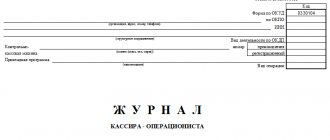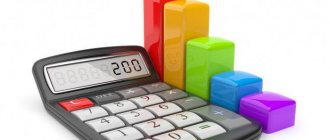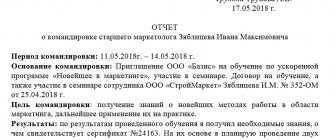What is a limit-fence card used for?
This document is drawn up for more than one operation to issue MPZ, and its validity period should not exceed one month. It allows you to build an effective document flow during the write-off of materials, reducing the time for their release and release.
In addition, the limit-fence card form m 8 allows you to control the expenditure of these assets in accordance with current standards. After all, the issuance of excess quantities of raw materials and materials is carried out only with the permission of the head of the company. Limits are determined on the basis of existing cost standards according to the production plan and technology.
In this case, a separate demand invoice is issued for the additional quantity of released stocks.
What is a limit-fence card
A limit-fence card is a primary accounting document of a cumulative nature, which serves as the basis for writing off MC from the warehouse of an enterprise to the workshops, to the sites of the same enterprise. The quantity of materials is written out based on their planned requirement.
The name and the form of the document itself were developed in the Soviet Union and have survived to this day. “Limit” means a type of restriction, “fence” - i.e. vacation, receipt - indicates that this is a strict reporting form.
A limit intake card is issued if there are limits on the supply of materials that will be used in the manufacture of own products, i.e. this is an internal document. It controls the work of warehouse employees, especially those who honestly perform their duties - it guarantees them protection from accusations and suspicions of theft.
What is it used for?
In order to carry out production activities, the structural divisions of the enterprise need to systematically consume MC for various purposes. The number of MCs is established due to the limits that are determined for each item.
MC limits, in turn, are formed from approved consumption standards per 1 unit. finished products, as well as according to the production volumes of these products according to the production programs of sites and workshops. Enterprise managers or other persons authorized by them are responsible for approving limits.
The movement of MC is documented using limit cards, which also serve as a supporting documentary basis for the release of MC from the warehouse to other structural divisions of the enterprise. In addition, the limit-fence card facilitates ongoing control over compliance with established limits on the consumption of goods and materials. Material is released only from the warehouse indicated in the limit-receipt card.
Thanks to the limit card, materials that were not used in production are accounted for (return). If it is necessary to release material in excess of the limit or replace the item specified on the card with another, then this occurs with the permission of the manager or authorized persons.
Application procedure
Form M-8 is written out by the accountant in two copies, one is handed over to the storekeeper making the issue, the other to the representative of the workshop in which products are manufactured from materials and materials. The document can be extracted using specialized accounting programs that include this form.
The limit is issued only for one type of inventory.
During a certain period, materials are issued in accordance with current standards. To do this, their recipient needs to present to the appropriate specialist his copy of the document in which a record is made of the issued volume of inventory. Each time, officials sign for the quantity that was released. The write-off of materials is recorded both in the document of the storekeeper and the recipient.
Returns of unused materials will be reflected on the back of the card. It must be taken into account when calculating the remaining authorized quantity of stock for issue.
When closing a material report, form M8 limit intake card is reflected in its expenditure part and is attached to it.
As soon as the previous limit is closed, you need to issue a new form. This accounting document is stored at the enterprise for 5 years.
What is included in the M-8 and who issues it?
The limit-fence card of the unified form M-8 combines several types of information:
- calendar-quantitative: shows how many units of material assets were issued from the warehouse on what dates; what limit is set for this type of materials; what is the remaining limit after each material issue;
- accounting: contains an indication of the corresponding accounting account;
- organizational: reflects information about the sender of the material and its recipient, full name. and signatures of responsible persons.
.
The question of which structural unit issues the limit-fence card is decided by the management of the enterprise. From paragraph 100 of Order No. 119n it follows that these functions are assigned to the supply department or planning service.
Check out the example of filling out the limit-fence card.
Samples of documents used in everyday life are given in the articles:
Subscribe to our newsletter
Yandex.Zen VKontakte Telegram
- “How to make an inventory of property during a divorce - sample”;
- “Pre-trial claim for flooding an apartment - a sample.”
How to fill out form M-8
[ads-pc-2] [ads-mob-2]
The card indicates the name of the company and its OKPO code.
The document must have a serial number, as well as the date of its issue.
In the table you need to fill in the transaction code (if a coding system is used), the name of the recipient’s type of activity, and also indicate the structural units that are the sender and recipient of the materials, the latter’s cost account, as well as the unit of output.
Next, write down the name of the inventory, its nomenclature number, code and name of the unit of measurement in which its quantity is calculated. The responsible person in the form determines the maximum permitted for the issuance of materials. Then the entry number is entered in the asset record card.
When closing the card, the corresponding column indicates the total quantity of materials issued for the given period, its price and the total amount excluding VAT.
When releasing them, the storekeeper marks each time on the card the date and quantity of stocks issued, and also calculates the size of the remaining limit. Next, the warehouse worker and the recipient sign for their issuance and receipt in each other’s copies.
If there are empty lines in the “Released” section, they must be crossed out.
After manufacturing finished products, there may be unused materials left; at the end of the working day, they are sent back to the warehouse. Returns of inventories are displayed in the “Returned” columns, indicating the date and quantity of inventory. The limit for the next day should take them into account. Here you also need to cross out the remaining unfilled lines.
The document must be endorsed by the head of the department who set the limit or by the director himself, indicating his position and personal data.
Next, the limit-fence card is signed by the head of the workshop in which the released materials are used in production, and by the storekeeper with a decoding of their profession and full name. The closing date of the document is also indicated.
Frequency of filling out the card
Typically, the limit and intake card is drawn up monthly, but if we are talking about small batches of materials, it can be filled out quarterly.
If material arrives at the production site from several warehouses, then for each of them a card is issued personally - it indicates the quantity of materials issued, the date of receipt and the signature of an authorized person. After the materials are used up, the limit card is transferred to the enterprise accounting department for control. A limit intake card is issued when the organization has approved a limit for the release of materials into production. They draw up a map for only one type of material. At each issue of materials, entries are made in the card about the amount of material issued and the balance of the limit. Materials are released according to the limit-fence card only from one warehouse indicated in the card.
Limit and intake card M-8 - sample filling. New form of limit-fence card
Correct and accurate accounting of inventory items at enterprises occurs with the help of many accounting documents, one of which is a limit card.
What is a limit-fence card
A limit-receipt card is a primary accounting document of a cumulative nature, which serves as the basis for writing off MC from the warehouse of an enterprise to the workshops, to the sites of the same enterprise. The quantity of materials is written out based on their planned requirement.
The name and the form of the document itself were developed in the Soviet Union and have survived to this day. “Limit” means the type of restriction, “fence” – i.e. vacation, receipt of goods and materials, “card” - indicates that this is a strict reporting form.
A limit intake card is issued if there are limits on the supply of materials that will be used in the manufacture of own products, i.e. this is an internal document. It controls the work of warehouse employees, especially those who honestly perform their duties - it guarantees them protection from accusations and suspicions of theft.
What is it used for?
In order to carry out production activities, the structural divisions of the enterprise need to systematically consume MC for various purposes. The number of MCs is established due to the limits that are determined for each item.
MC limits, in turn, are formed from approved consumption standards per 1 unit. finished products, as well as according to the production volumes of these products according to the production programs of sites and workshops. Enterprise managers or other persons authorized by them are responsible for approving limits.
The movement of MC is documented using limit cards, which also serve as a supporting documentary basis for the release of MC from the warehouse to other structural divisions of the enterprise. In addition, the limit-fence card facilitates ongoing control over compliance with established limits on the consumption of goods and materials. Material is released only from the warehouse indicated in the limit-receipt card.
Thanks to the limit card, materials that were not used in production are accounted for (return). If it is necessary to release material in excess of the limit or replace the item specified on the card with another, then this occurs with the permission of the manager or authorized persons.
What needs to be done before filling out limit cards?
The planning department, the material supply department must issue limit cards with established limits in 2 copies for a month, in some cases for a quarter, half a year, or a year. These cards must have monthly tear-off coupons for the actual vacation of the MC. One copy of the card is given to the consumer at the MC (site, workshop), the other is transferred to the warehouse.
Limits must be justified and signed by the manager. If spending limits need to be increased unplanned, then the head of the structural unit must issue an additional requirement. When the manager allows the limit to be increased, then the following mark is made on the limit card: “Replacement, see requirement No.__.”
How it is filled
In both copies, you must indicate the name of the enterprise, a code that characterizes the operation of moving inventory, document number, date, type of activity, established limit, item number of inventory, if one is provided at the enterprise, the same applies to the OKEI code, name, cost code, information about the recipient and sender, the workshop, what quantity was released and what the balance was. The unit of measurement of the product is indicated (kilogram, package, piece, meter), which can be either materials or certain services. The name is written in as much detail as possible: brand, size, grade.
The release of MC occurs in the case when a representative of a workshop or section presents his copy of the card at the warehouse, after which the storekeeper will note on his limit card and in the customer’s copy the date, the number of MC issued, and after that the storekeeper withdraws the balance and records it in the same way as the expense it into cards.
At the end of the month, both copies of the cards are transferred to the accounting department so that the accountant displays the expense of the inventory on the proper accounts of the accounting system and indicates in the cards synthetic accounts, sub-accounts that participate in correspondence, the prices of each inventory item excluding VAT and the analytical accounting codes of the inventory. When the limit cards are closed, the accountant sums up the number of goods and materials issued and writes down their cost value. If there were returns of unused inventory items, their cost is indicated with a minus sign. The closing date of the card is considered the moment it is signed by the heads of the departments that give and receive inventory items. All copies must be signed by both the department representative and the storekeeper.
The limit intake card, a sample of which can be filled out in the photo, is written out and filled out for one name of the MC, one item number at a time.
Forms of limit-fence cards
- The M-8 limit-fence card is the primary accounting document of the unified standard intersectoral form, which was approved on October 30, 1997. Resolution No. 71a of the State Statistics Committee of Russia.
- Limit card (form 62) is a primary accounting document intended for writing off inventory and materials from the enterprise’s warehouses to its workshops or areas. This form is no longer used, because... it is not compiled according to a unified form in the albums of primary accounting documents. Following the order of the Ministry of Finance of the Russian Federation dated December 28, 2001 No. 119N, the primary accounting documentation for the consumption of medical supplies from the warehouses of an enterprise to its divisions is a limit-withdrawal card (standard interindustry form N M-8).
- Limit fence card, form 117 - this is a specialized form approved by the State Agricultural Industry of the USSR on March 20, 1987 N 281-4. Previously used in the agro-industrial complex, but also lost its effectiveness, like form 62.
Is it necessary to use limit cards?
The limit-fence card (form M-8) can be used by enterprises as an approximate sample, because Article 9 of the Federal Law of 06.12.11 No. 402-FZ on “Accounting” from 01.01.13, the requirements for the use of unified forms of primary accounting documentation were canceled.
Cards are necessarily used in enterprises where there are limits on the supply of materials, often in mass food production.
With the advent of automated accounting, the need for limit cards is gradually disappearing; this applies to non-standard, small-scale production. If the enterprise does not have internal regulations requirements regarding the form of accounting for MC consumption, then it can only be maintained in electronic form, without issuing a paper copy.
Sources: https://spmag.ru/articles/limitno-zabornaya-karta https://znaybiz.ru/buh/plan-schetov/sklad/limitno-zabornaya-karta.html https://businessman.ru/new- limitno-zabornaya-karta-m-8-obrazec-zapolneniya.html https://assistentus.ru/buhuchet/chto-takoe-materialno-proizvodstvennye-zapasy-v-buhuchyote/
How it is filled
In both copies, you must indicate the name of the enterprise, a code that characterizes the operation of moving inventory, document number, date, type of activity, established limit, item number of inventory, if one is provided at the enterprise, the same applies to the OKEI code, name, cost code, information about the recipient and sender, the workshop, what quantity was released and what the balance was. The unit of measurement of the product is indicated (kilogram, package, piece, meter), which can be either materials or certain services. The name is written in as much detail as possible: brand, size, grade. The release of MC occurs in the case when a representative of a workshop or section presents his copy of the card at the warehouse, after which the storekeeper will note on his limit card and in the customer’s copy the date, the number of MC issued, and after that the storekeeper withdraws the balance and records it in the same way as the expense it into cards. At the end of the month, both copies of the cards are transferred to the accounting department so that the accountant displays the expense of the inventory on the proper accounts of the accounting system and indicates in the cards synthetic accounts, sub-accounts that participate in correspondence, the prices of each inventory item excluding VAT and the analytical accounting codes of the inventory. When the limit cards are closed, the accountant sums up the number of goods and materials issued and writes down their cost value. If there were returns of unused inventory items, their cost is indicated with a minus sign. The closing date of the card is considered the moment it is signed by the heads of the departments that give and receive inventory items. All copies must be signed by both the department representative and the storekeeper. The limit intake card, a sample of which can be filled out in the photo, is written out and filled out for one name of the MC, one item number at a time.
limitno-zabornaya_karta.jpg
Related publications
A limit collection card for receiving material assets is necessary to document the fact that a certain volume of raw materials and supplies is issued from a warehouse. This primary form ensures separate accounting of inventory items taken within the regulatory limit and in excess of it.
Limits are set taking into account the rate of consumption of raw materials and residues at the end of each reporting period. Excessive release of valuables is allowed if:
- the production program was adjusted;
- there is an overfulfillment of the plan for the production of commercial products;
- materials need to be replaced;
- Errors were made when calculating the limit.
Sample and filling rules
Until recently, there was a single form M-8, which was used by all organizations. However, now each company has the right to develop its own form, depending on its needs. In this case, the principle of “one card per type of material” is taken into account. If these are similar species that can replace each other, but they put o in the map and then refer to the corresponding document.
The map consists of 2 parts. In the first one write:
- name of the organization, its OKPO code;
- Date of preparation;
- name of the structural unit – i.e. warehouse;
- the type of activity for which the material is issued;
- unit of material issued.
The second part is the main one. It contains the following information:
- Description of the released material - name in accordance with the accepted nomenclature, dimensions, grade and brand.
- The total number of units actually supplied.
- The remaining units are in accordance with the limit.
- Nomenclature number of the material.
- Amount with and without VAT.
- Signature of the warehouse manager on the release of goods.
- Then the manager or other authorized person who previously set the appropriate limit must put his signature.
- Also, the signature, transcript of the signature, date and position are given by the warehouse manager.
The document is drawn up in 2 original copies - 1 for the sender who issued the goods or material, and the other for the recipient who receives the goods and materials. At some point in time, the specified limit will be reached.
Immediately after this, the storekeeper transfers his copy to the accounting department along with other reports on the movement of goods. Limit cards must be returned at least once a month. The document is stored for at least 5 years.
If an enterprise owns several warehouses, cards are issued for a specific department. It is unacceptable to receive one card of value from different warehouses. On the other hand, in some cases the map can be compiled in 1 copy. This is possible when the transfer is recorded in the accounting card, and only the warehouse manager or storekeeper signs the card itself.
Filling out the document
The map used has a single standard intersectoral form No. M-8. It contains the following information:
- name of company;
- outgoing document serial number;
- Date of preparation;
- the established transaction code for materials on this limit-fence card (to be filled out if the company uses coding);
- the type of activity or process in which these materials are used;
- name of the sender - the structural unit that issues materials;
- name of the recipient of material assets;
- unit of measurement of products in the production of which dispensed materials are used;
- name of the material being sold and its brief description by brand, grade, size;
- nomenclature number assigned to this material at this enterprise in accordance with the existing developed price nomenclature. In the case of a limited supply of this material, the company has the right not to assign an item number, then there is a dash in the column;
- name of the unit of measurement of the material (piece, meter, kilogram...);
- unit of measurement code defined in accordance with the classifier (OKEI) of the State Standard of Russia No. 366 dated December 26, 2006.
The “Limit” column indicates the maximum amount of material allowed for release from the warehouse. It is filled out by the employee responsible for setting limits, or the employee responsible for issuing limit cards.
The accounting department processing this document records in it:
- account and subaccount numbers;
- analytical accounting code for the material being written off;
- price per unit of material excluding VAT.
To receive material at the warehouse, the employee presents his copy of the limit-receipt card to the warehouseman. The storekeeper makes identical entries in both cards, his own and the employee's. They indicate information about the date and quantity of material issued. Then he signs the employee's card, and the employee signs the storekeeper's card. The return of materials is processed in the same way. The card also indicates the serial number according to the warehouse card file.
After the end of the period established for the use limit, a balance is drawn up, which takes into account all issues and returns of material. Accounting calculates the cost of materials supplied for the reporting period. The closing date of the limit-fence card is indicated after it is signed by the heads of the structures that issued and received the materials.
Correct and accurate accounting of inventory items at enterprises occurs with the help of many accounting documents, one of which is a limit card.
Setting limits
Organizations that have warehouses where materials, raw materials, goods, etc. are stored, as a rule, set limits on their release for each item. The head of the supply department, his deputy, or the head of the enterprise himself is responsible for determining restrictions. Limits are formed in accordance with the economic needs of the company; their calculation takes into account:
- rate of material consumption per unit of time (day, month, year);
- production plans (programs) of the organization's divisions;
- remnants of materials available from the previous reporting period.
Setting specific limit values is the prerogative of management, and their value may vary depending on various reasons:
- change in consumption rate;
- clarification of production volumes;
- change in production plan;
- use of new equipment;
- use of new materials;
- correction of inaccuracies that were made in earlier calculations.
At the same time, in a number of cases, the issuance of inventory items in excess of the limits is allowed. Then you need to put an appropriate mark on the limit card and describe the reason for the excess. This may be due to a forced increase in production volume, production of additional units of products due to defective old ones, etc.
Thus, the card performs 2 main functions - tracking the fact of exceeding the limit and confirming the release of material assets.
Video instructions for compiling:
Form M-8
is used in the presence of limits on the supply of materials to register the release of materials that are systematically consumed in the manufacture of products, as well as for ongoing monitoring of compliance with established limits on the supply of materials for production needs and is a supporting document for writing off material assets from the warehouse.
Limit-fence card in form M-8
written out in two copies for one name of material (item number). Before the beginning of the month, one copy is transferred to the structural unit - the consumer of materials, the second - to the warehouse.
The release of materials into production is carried out by the warehouse upon presentation by a representative of the structural unit of his copy of the limit card.
The storekeeper notes in both copies the date and quantity of materials issued, after which he displays the remainder of the limit according to the item number of the material. The limit and intake card is signed by the storekeeper, and the limit and intake card of the warehouse is signed by a representative of the structural unit.
To reduce the number of primary documents, where appropriate, it is recommended to register the issue of materials directly in materials accounting cards (Form N M-17). In this case, expenditure documents for the release of materials are not drawn up, and the operation itself is carried out on the basis of limit cards, issued in one copy, and accounting documents that have no significance. Vacation limit
You can also indicate it on the card itself. When receiving materials, the representative of the structural unit signs directly on the materials accounting cards, and the storekeeper signs on the limit-fence card.
According to the limit-fence card, records are also kept of materials not used in production (returns). In this case, no additional documents are drawn up.
Excessive supply of materials and replacement of some types of materials with others is allowed only with the permission of the head of the organization, chief engineer or persons authorized to do so. The limit is changed by the same persons who are granted the right to set it.
The release of material assets is carried out from those warehouses that are indicated in the limit-fence map. The storekeeper notes the date and quantity of materials issued on the limit card, after which he displays the remainder of the limit for each item number of materials. The warehouse delivers limit-fence cards to the accounting department after the limit has been used.
Limit-fence card form (M-8)
with partially completed details can be completed on a computer.
To carry out their production activities, the structural divisions of the enterprise systematically consume material assets for various purposes. The quantity of consumed valuables is determined by the limits for each item. The registration and release of such materials is carried out using limit cards.
Limits are set according to approved consumption standards per unit of finished product and in accordance with the production volumes of these products according to the production programs of workshops and areas. Limits are set or changed only by enterprise managers or other authorized persons approved by order of the manager.
The release of materials in excess of established limits can only be carried out with the permission of the head of the enterprise or an authorized person. The supply of above-limit materials is carried out according to separately issued requirements.
The card is issued for one type of material or for several interchangeable materials. In the case of replacing one material with another, which is allowed under this card, an entry about this is made on the card - “Replacement, see requirement No. ___”, while the consumption is recorded accordingly and the limit is reduced by this amount.
The accounting department draws up the document in two copies: one for the consumer (production site), and the other for the warehouse where the material is stored. Material release according to these limit and intake cards can only be made from this attached warehouse.









